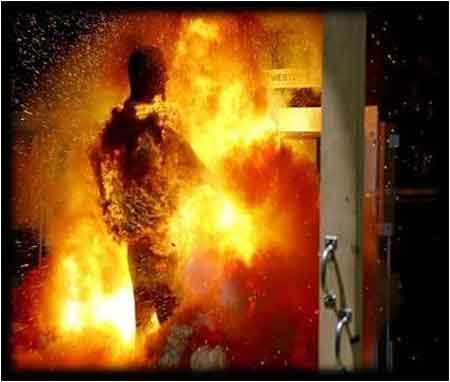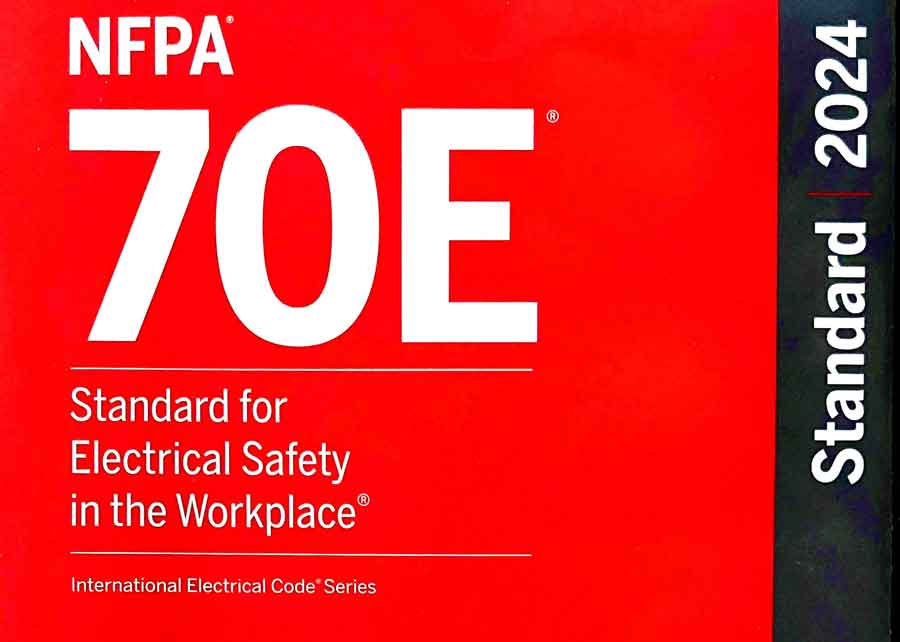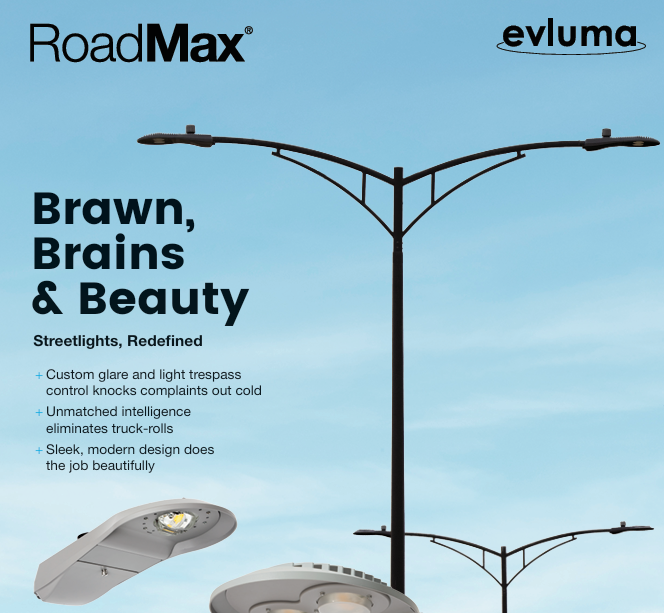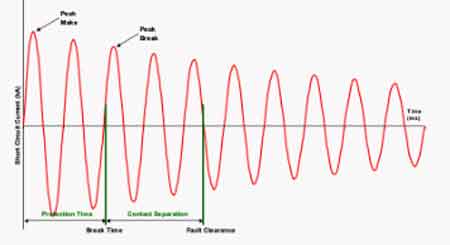Arc Flash Death - A Preventable Outcome
By R.W. Hurst, Editor

NFPA 70e Training
Our customized live online or in‑person group training can be delivered to your staff at your location.

- Live Online
- 6 hours Instructor-led
- Group Training Available
Download Our OSHA 3075 Fact Sheet – Understanding Electrical Hazards in the Workplace

- Learn the effects of electric current on the human body
- Understand OSHA safety standards and protective devices
- Discover essential lockout/tagout and grounding practices
Arc flash death is a fatal result of intense electrical explosions caused by arc faults. It can occur in milliseconds, making proper PPE, training, and hazard analysis essential for worker safety.
What is "Arc Flash Death"?
Arc flash death refers to a fatality caused by extreme heat, pressure, and electrical energy released during an arc flash incident.
✅ Can occur in less than a second
✅ Often results from poor safety practices or inadequate PPE
✅ Preventable with proper training and arc flash analysis
Request a Free Training Quotation
Arc flash death can occur instantly due to extreme heat, powerful pressure waves, or the impact of airborne debris. These events often stem from energized equipment failures, inadequate maintenance, or a lack of personal protective equipment (PPE). Understanding what leads to fatal arc flash events is crucial for preventing them through effective training and safety compliance.
The consequences of an electrical explosion can be catastrophic, leading to severe injuries, fatalities, and devastating workplace disruptions. Understanding the risks, causes, and safety measures associated with electrical system incidents is crucial for those working with or near electrical systems. Despite stringent safety standards, many professionals still face life-threatening dangers due to equipment failure, human error, and inadequate training. Addressing these issues through proper protocols, the use of personal protective equipment (PPE), and ongoing education is essential to reducing fatalities and ensuring a safer working environment. For a comprehensive overview of arc flash hazards, including their causes and preventive measures, refer to What Is Arc Flash - Electrical Safety.
Many accidents could be avoided if proper preventive measures were strictly followed. Electrical systems require regular maintenance to ensure their reliability and safety; yet, failures often stem from overlooked inspections, aging infrastructure, or improperly rated equipment. When circuits are overloaded or protective devices fail, the risk increases dramatically. The failure to de-energize equipment before working on it remains a leading cause of fatal incidents. While OSHA and NFPA regulations provide clear safety guidelines, non-compliance, whether due to rushed schedules or a disregard for protocol, remains a primary contributor to these catastrophic events. Explore various protection strategies and safety measures in the detailed guide on Arc Flash Protection: Tips To Improve Electrical Safety.
FREE EF Electrical Training Catalog
Download our FREE Electrical Training Catalog and explore a full range of expert-led electrical training courses.

- Live online and in-person courses available
- Real-time instruction with Q&A from industry experts
- Flexible scheduling for your convenience
What Causes an Arc Flash Death?
Several critical factors can result in death during an arc flash event:
-
Intense heat: The temperature of an electrical explosion can exceed 35,000°F—hotter than the surface of the sun. This extreme heat can cause catastrophic burns, often deadly, especially for workers positioned near the arc source.
-
Pressure wave: The sudden expansion of air and gases during the blast creates a forceful wave that can knock workers off their feet, hurl them into structures or equipment, or impact vital organs—any of which may prove life-threatening.
-
Shrapnel and debris: Explosive forces can launch molten metal, equipment fragments, or other high-velocity debris. The resulting trauma can have fatal consequences, similar to those experienced in military-grade explosions.
-
Intense light and sound: The blinding flash and deafening sound can lead to disorientation, loss of vision or hearing, or confusion in critical moments, which can contribute to deadly mistakes or delayed responses.
-
Secondary effects: Even if the electrical blast itself doesn’t directly cause death, the resulting aftermath—such as falls from elevated work areas or uncontrolled contact with energized components—can be just as lethal.
Employers and workers alike must prioritize rigorous safety protocols to mitigate hazards. Lockout/tagout (LOTO) procedures, designed to prevent accidental energization of circuits, are essential but frequently ignored or improperly implemented. Thorough risk assessments before initiating electrical work could save lives, yet they are often treated as a formality rather than a necessity. Companies that invest in safety programs emphasizing proper installation techniques and adherence to standards significantly reduce the likelihood of fatalities. In contrast, those who cut corners place workers in deadly situations where a single mistake can lead to irreversible consequences.
How Can It Be Prevented?
Preventing electrical explosions requires a combination of safety practices, proper equipment, and employee training. Some of the most effective prevention strategies include:
-
Risk assessments: Before performing any work on electrical systems, employers must conduct thorough risk assessments. This involves identifying potential hazards, estimating the likelihood of an electrical explosion occurring, and determining the necessary precautions to avoid an incident.
-
Proper use of personal protective equipment (PPE): Workers must wear the appropriate PPE, such as flame-resistant clothing, gloves, and face shields, designed to protect workers.
-
Safe Work Practices: Workers must be trained to follow safe work practices, including de-energizing equipment before performing maintenance, maintaining a safe distance from live circuits, and using the proper tools.
-
Regular maintenance: Ensuring that electrical systems are regularly maintained and inspected can help reduce the chances of equipment failure, a common cause of electrical explosions.
-
Engineering controls: Installing arc-resistant equipment, remote racking devices, and current-limiting devices can help contain or reduce the effects of an electrical explosion, making the work environment safer for employees.
Training and awareness play a crucial role in preventing arc flash-related deaths. Many electrical workers receive only basic safety training, leaving them unaware of the full extent of hazards. Understanding the dangers associated with live electrical work, recognizing warning signs of faulty equipment, and properly interpreting labels on panels can make a difference between life and death. Ongoing training programs tailored to specific job roles ensure that workers remain vigilant and equipped with the knowledge necessary to minimize risk. More importantly, fostering a safety-first culture in the workplace encourages accountability, empowering employees to take the necessary precautions rather than succumbing to unsafe work habits.
Even with the best safety training, the right personal protective equipment (PPE) is the last line of defence in an incident. The sheer intensity of an electrical explosion can cause severe burns in milliseconds, making arc-rated clothing, gloves, and face shields essential for workers operating in high-risk environments. However, PPE is often misunderstood or misused, with some workers failing to wear the appropriate gear or underestimating the level of protection required. While PPE cannot prevent an electrical explosion from occurring, it can mean the difference between surviving an incident with minimal injuries and suffering fatal burns. Learn about the necessary PPE and safety gear required for arc flash protection on Arc Flash PPE Guide: NFPA 70E Protection.
Electricity Today T&D Magazine Subscribe for FREE

- Timely insights from industry experts
- Practical solutions T&D engineers
- Free access to every issue
What Is the Likelihood and What Factors Influence Survival?
The likelihood of death from an electrical explosion depends on several factors, including:
-
Proximity to the electrical explosion: Workers standing close to the source of the electrical explosion are at a higher risk of fatal injuries due to the extreme heat and pressure.
-
Voltage level: Higher voltage systems tend to produce more severe accidents, increasing the chances of fatal injuries.
-
Availability of immediate medical assistance: Quick access to medical care can significantly improve survival rates for workers injured in an electrical explosion, particularly if they sustain severe burns or other critical injuries.
-
PPE usage: Proper PPE can drastically reduce the severity of injuries, though it may not completely eliminate the risk of death in all cases. Workers without the proper PPE are at a far higher risk of death during an incident.
In general, unprotected workers, close to the source of the arc, or in high-voltage environments, face the highest likelihood of death.
What Are the Legal Consequences?
Employers have a legal obligation to provide a safe working environment for their employees, and failure to do so can result in severe legal and financial consequences, particularly in the event of an accident. Some of the regulatory and legal implications include:
-
OSHA penalties: In many countries, regulatory bodies like the Occupational Safety and Health Administration (OSHA) enforce strict rules for electrical safety. Failure to comply with these regulations could lead to hefty fines if an employer is found to have violated safety standards.
-
Civil lawsuits: In the aftermath of an accident, the victim’s family may file a civil lawsuit against the employer for wrongful death, particularly if it is determined that the incident resulted from negligence or failure to follow safety protocols.
-
Criminal liability: In extreme cases, especially where gross negligence is proven, employers may face criminal charges related to the death.
The legal and financial ramifications for a company following an accident can be significant, making it critical for employers to comply with safety regulations and ensure that all preventative measures are in place.
EF Partner Media
 Bushing Monitoring: What's the Difference Between Sum of Currents and Voltage Reference
Article
Bushing Monitoring: What's the Difference Between Sum of Currents and Voltage Reference
Article
 NFPA 70E Was Originally Developed at OSHA's Request to Address Electrical Hazards
Brochure
NFPA 70E Was Originally Developed at OSHA's Request to Address Electrical Hazards
Brochure
 RoadMax Streetlights
Product
RoadMax Streetlights
Product
 Calisto R9 - High-accuracy and Low-maintenance Dissolved Gas Analysis (DGA) Monitor
Calisto R9 - High-accuracy and Low-maintenance Dissolved Gas Analysis (DGA) Monitor
How Does PPE Protect Workers?
Personal protective equipment (PPE) is one of the most effective tools for minimizing injuries during an incident. PPE specifically designed for protection includes flame-resistant clothing, insulated gloves, face shields, and helmets. These are designed to withstand the extreme heat, pressure, and flying debris generated during an electrical explosion.
While PPE can significantly reduce the severity of injuries, it is not always enough to prevent death, particularly in severe incidents. PPE is most effective when combined with other safety measures, such as proper risk assessments, equipment maintenance, and adherence to safe work practices.
In some cases, where the electrical explosion is particularly violent or the worker is in very close proximity to the flash, PPE may not be able to provide full protection. For example, even with flame-resistant clothing, the intense heat from an electrical explosion can cause burns through the material, or the pressure wave could cause fatal blunt force trauma.
The grim reality is underscored by statistics and case studies that illustrate the frequency and severity of these incidents. Reports reveal that hundreds of electrical workers sustain life-altering injuries or fatalities each year due to electrical explosions. The aftermath of such incidents often leads to extensive investigations, regulatory penalties, and costly lawsuits. However, beyond the legal and financial repercussions, the loss of a life impacts colleagues, families, and communities. The emotional and psychological toll on survivors—those who witness or endure these violent events—should not be overlooked. Many workers who survive an electrical explosion have long-term physical disabilities and PTSD, forever haunted by the moment their lives changed in an instant.
It is not inevitable. It is a preventable tragedy that can be mitigated through strict adherence to safety protocols, comprehensive training, proper use of personal protective equipment (PPE), and a commitment to maintaining electrical infrastructure. The electrical industry has made significant progress in developing standards and technologies to mitigate risk; however, the ultimate responsibility lies with employers and workers to effectively implement these measures. No job is worth the risk of fatality, and the true cost of neglecting safety is measured in human lives. Preventing accidents starts with prioritizing safety—every day, on every job, without exception.
Arc flash death is a tragic and avoidable consequence of electrical system failures and unsafe work practices. Employers can reduce the likelihood of such incidents by understanding the causes of fatal injuries, implementing prevention strategies, and ensuring compliance with safety regulations. Personal protective equipment is critical in protecting workers, but it is not a foolproof solution. A comprehensive approach to safety, which includes PPE, training, and safe work practices, is essential for minimizing the risks associated with incidents. Enhance your knowledge and skills through our certified training programs, as detailed on Arc Flash Training - CSA Z462 Electrical Safety.
Related Resources







